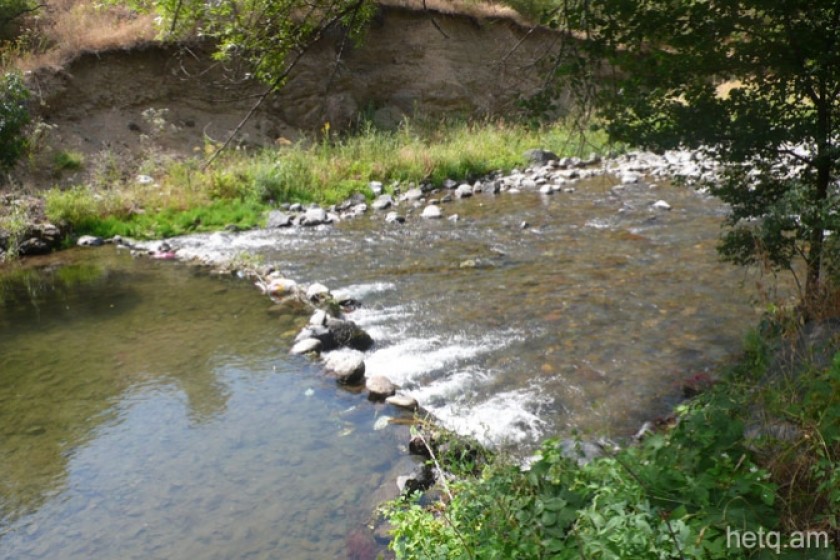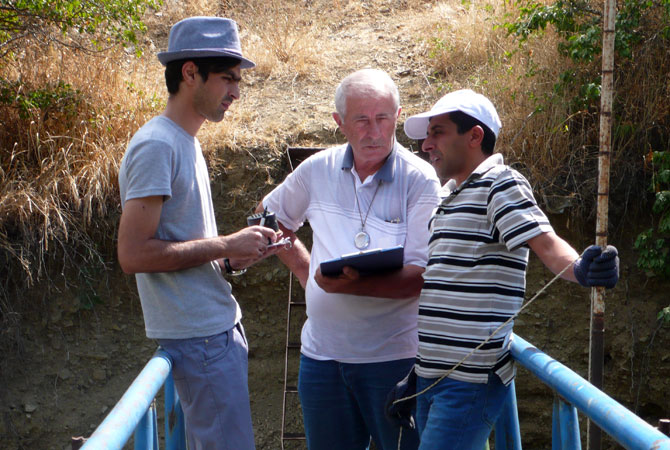
Not Enough Water in Azad River to Build World Bank Financed Irrigation Project
Water readings taken in July and August have shown that there isn’t enough water flowing in the Azad River to build the World Bank financed gravity fed Kaghtsrashen irrigation project.
The project must allow for an 850 liter per second flow of water to maintain a sustainable river ecosystem.
Recent readings show that in the dry summer months only 0.98 liters per second would remain after the environmental allowance; not enough to irrigate the twelve villages in Ararat Province included as beneficiaries in the project.
The government is left with two options – either it nixes the project entirely or disregards environmental safeguards and draws more water from the river.
During public hearings on the project residents of Garni (through which the Azad River flows) presented credible evidence that the river’s flow had decreased over the years and that a gravity fed irrigation project was unfeasible.
NKAR
It was decided to carry out water readings on a joint basis – local residents would team up with officials from the World Bank and Armenia’s Hydro-Meteorological (Hydromet) Service of Armenia's Ministry of Emergency Situations (MES).
The first readings took place in March and showed that there was enough water left over after maintaining the 850 liter per second environmental flow to operate the irrigation system.
But that was in the spring, when the river was flowing high after the winter melt.

Hydromet official Edgar Misakyan and others compare notes
Readings in July showed a 35 liter per second decrease in the river flow, and the drop has increased in August.
Local Garni residents are also concerned that the Azad River gorge isn’t protected enough under the law.
This is where the famous “Symphony of Stones” natural landmark is located, along with others recognized by law.
There’s only a passing reference to the Azad River gorge as a natural landmark in the report regarding the Kaghtsrashen Irrigation Project.
The report notes that of the four natural landmarks in the gorge only the Symphony of Stones may be affected by the project given that it’s located a mere 1.3 kilometers from where the irrigation pipes will start.

The report states that the Symphony of Stones landmark has never been plotted or it boundaries delineated, and this is perhaps why the project backers never submitted it to the Ministry of Culture for approval.
But the above argument is no excuse for putting the Symphony of Stones at risk. Project officials, in such cases, are obligated to verify the boundaries not only of this landmark but the three others in the gorge.
Such an obligation is stated in Article 22 of the RA Law on Preservation and Utilization of Immovable Monuments of History and Culture and of the Historic Environment.
 Videos
Videos Photos
Photos




Comments (1)
Write a comment